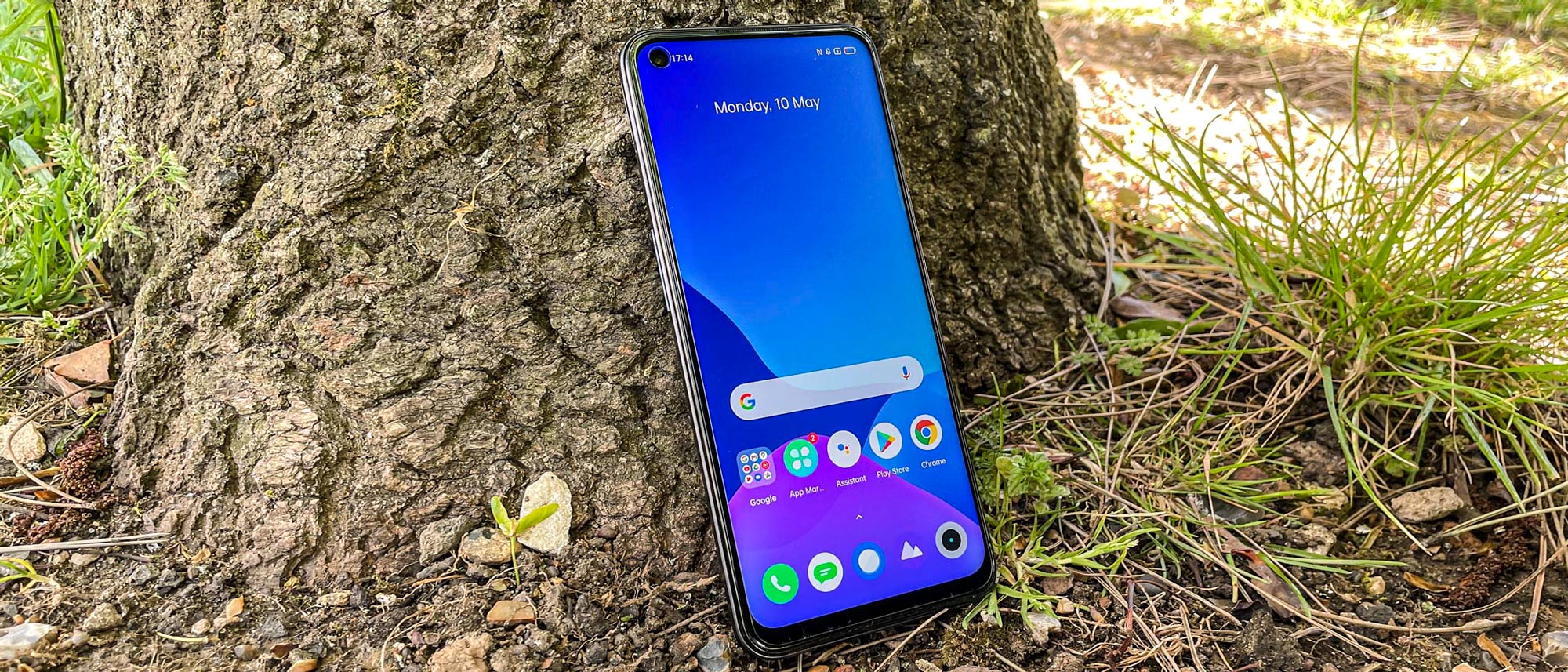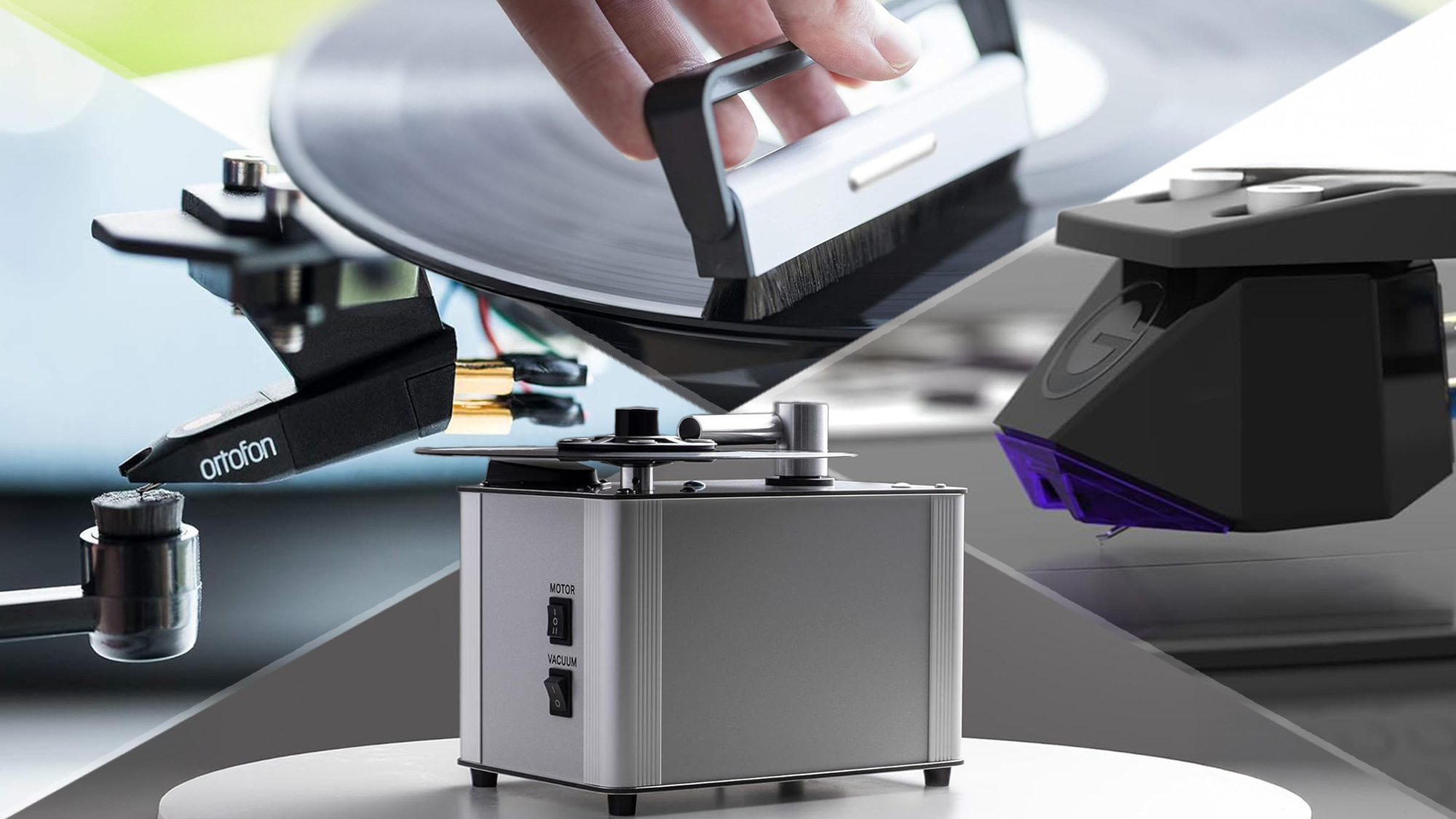Tom's Guide Verdict
The Realme 8 5G is among the cheapest 5G phones yet. But it doesn’t outshine budget smartphones like the Pixel 4a, OnePlus Nord N10 or Redmi Note 10 Pro.
Pros
- +
Cheap
- +
5G ready
- +
Bright 90Hz display
Cons
- -
Uneven performance
- -
No U.S. availability
Why you can trust Tom's Guide
Starting price: £200
Display: 6.5-inch LCD, FHD (1080 x 2400)
Refresh rate: 60Hz/90Hz adaptive
Rear cameras: 48MP main (f/1.8), 2MP macro (f/2.4), 2MP depth (f/2.4)
Front camera: 16MP (f/2.1)
Chipset: Dimensity 700 5G
RAM: 4GB/6GB/8GB
Storage: 64GB/128GB
Battery: 5,000 mAh
Charging: 18W wired
Operating system: Android 11 with Realme UI 2.0
Size: 6.40 x 2.94 x 0.33 inches (162.5 x 74.8 x 8.5 mm)
Weight: 6.5 ounces (185g)
If you want to make the leap to 5G as cheaply as possible, the Realme 8 5G (£200) could be just what you need. This budget Android phone offers a few impressive specs, with next-gen connectivity being one of the highlights.
Another plus is the the 90Hz display, which is a pleasant surprise at this cheap price. And you get a big 5,000 mAh battery to boot. Then again, there are already a lot of great affordable phones out there — even if not all of them offer 5G.
Based on our Realme 8 5G review, it's not quite best cheap phone material, but it's definitely worth a look.
Realme 8 5G review: price and release date
The Realme 8 5G goes on sale in the U.K. on May 20th. The U.S. market remains off-limits for Realme.
The phone starts at £200, but if you pre-order it between now and launch day, you can get it with a £20 discount. There are two specs options, with either 4GB RAM and 64GB storage or the £249 8GB RAM/128GB storage model I tested. With this price/specs combination, it beats the equivalent Pixel 4a's basic price by £100, and the OnePlus Nord N10 5G by £80. However, both of these phones can often be found discounted, so it's worth looking for deals.
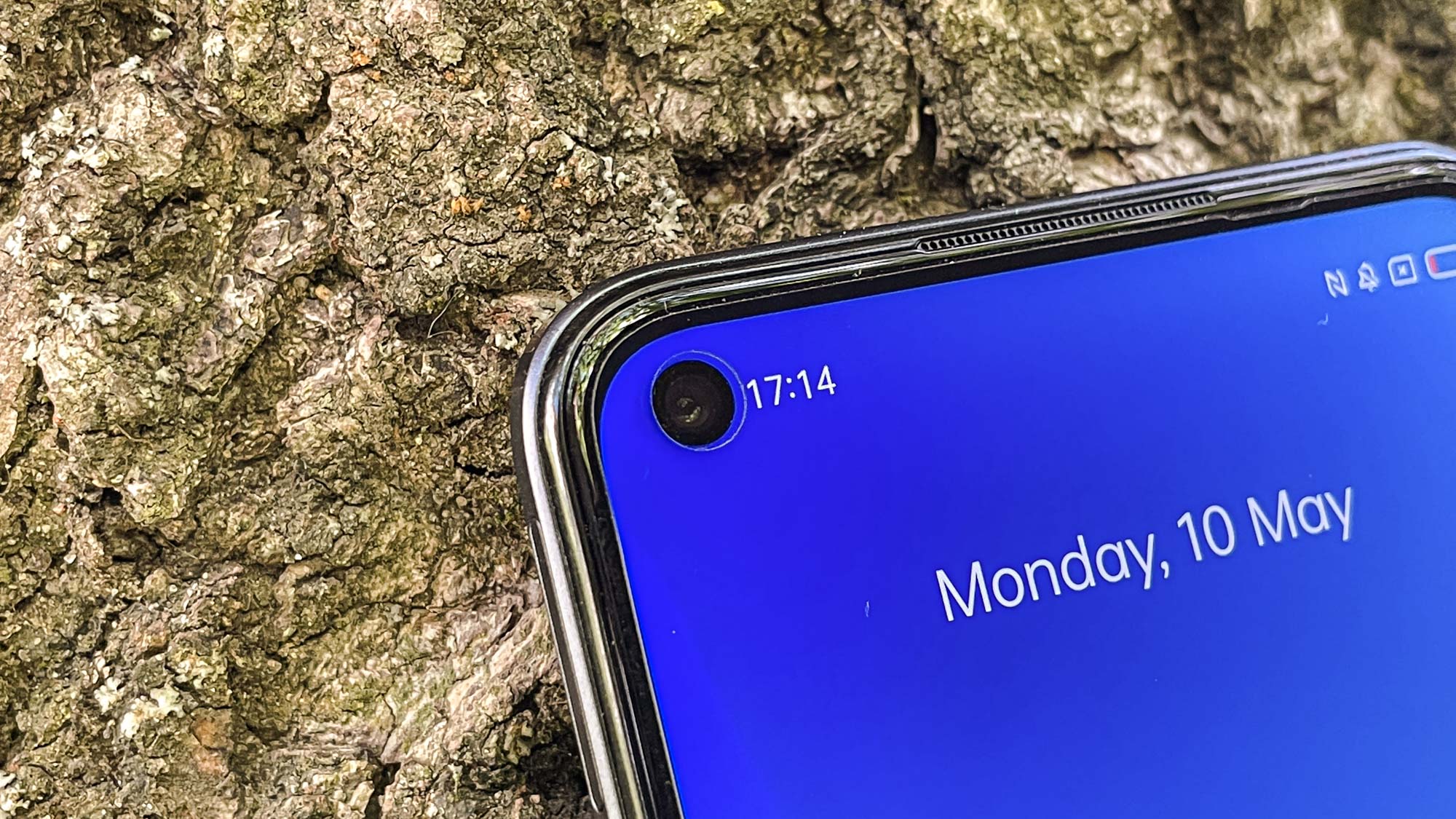
Realme 8 5G review: Design

I didn’t expect a stunning design from a phone as cheap as the Realme 8 5G, but when I first sized up the phone in the box, I had some appreciation for how Realme tried to make this phone look interesting.
The sides and back of the phone are made of plastic, but the two-tone color scheme helps give the phone a little personality. The Supersonic Black colorway of my test unit gives the phone a mature air, and you can also get the more playful Supersonic Blue. Both are reflective and catch the light nicely, though you’ll have a hard time seeing it under all the fingerprints.
Get instant access to breaking news, the hottest reviews, great deals and helpful tips.
The front of the Realme 8 5G looks a bit dated, due to an unfortunately chunky bottom bezel beneath its 6.5-inch display.
The back camera block looked good to me at first, with the bump featuring a raised lip to stop the lenses from touching the surface you’ve laid the phone on. However, a closer look reveals that the 8 5G pretends to have more cameras than it has. There are four circles within the bump, but one of them doesn’t contain a lens, just an “AI” badge. That layout keeps things symmetrical, but also feels like Realme’s trying to make the phone look fancier than it is.
Realme 8 5G review: Display
Measuring 6.5 inches, the Realme 8 5G sits around the middle when it comes to Android handset sizes these days. In a surprise for a cheap phone, the RealMe 8 5G offers a fairly fast 90Hz refresh rate. It's not as smooth as the premium 120Hz rate found on the Redmi Note 10 Pro, but we'll take it. The Realme 8 5G can dynamically switch between 90Hz and 60Hz refresh rates depending on the task, which should save battery life.
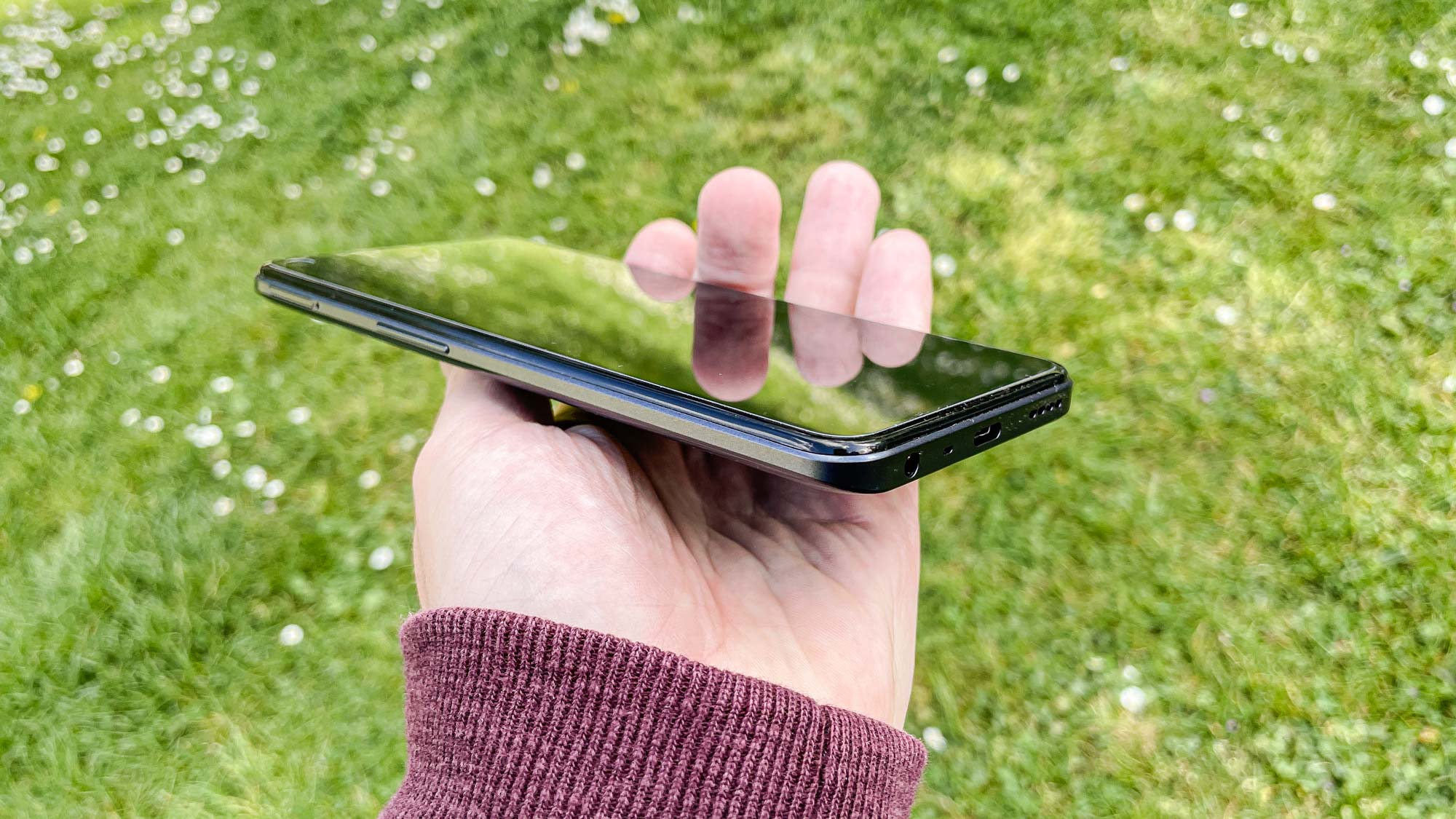
I watched the MCU Phase 4 trailer, and the highlights of the Marvel movies’ past and future were rendered in FHD resolution with bright colors that would make Stan Lee proud, and at a decent brightness for an LCD panel. The sound doesn’t match up quite so well, feeling a little tinny from the phone’s top and bottom speakers.
Realme 8 5G review: Cameras
The Realme 8 5G is equipped with a modest triple rear camera array. The highlight is the phone’s 48MP main sensor, which is backed up by a 2MP depth sensor and a 2MP macro sensor.

That’s meager pickings compared to the Redmi Note 10 Pro, the phone I compared the Realme against. While it costs the same as the Realme 8 5G, the Note 10 Pro offers much more impressive specs overall, including an additional ultrawide camera and a higher-res 108MP main sensor.
This first comparison shows the main cameras’ performance when shooting this statue of the founder of London’s Waterlow Park. The Realme 8 5G’s photo is brighter than the Redmi’s, but it also has a much greener hue to it. The Redmi’s image is closer to real life, and therefore my favorite here.
The only other primary camera on the Realme 8 5G is its macro sensor. It produces an acceptable image of this flower, but it has nothing on the Redmi’s photo. Redmi has a significant advantage in having a larger 5MP sensor with a “telemacro” lens that allows it to take close-ups from further away, allowing more light to illuminate the subject. It’s why the Realme 8 5G’s photo can’t match the Note 10 Pro’s shot for clarity, color or depth of field.
Our last rear camera test looks at the depth sensors of both phones. Depth sensors aid the other cameras on a phone with special effects like bokeh, so this comparison shows two portrait mode shots taken with the rear main camera. Even with its bokeh slider cranked up to maximum, the Realme’s bokeh doesn’t match up to the Redmi’s in how blurred the background becomes. Both shots look good though, with the 8 5G offering a darker tint and the Note 10 Pro offering a lighter one.
The final camera on the Realme is its 16MP selfie camera, which I tested with a portrait mode shot. It’s a similar story to the depth sensor in that the Redmi produces a much better bokeh effect, but both phones produce nice shots with different brightness levels.
Realme 8 5G review: Performance

Rather than the typical Qualcomm Snapdragon chip found in Android phones, Realme packs Mediatek’s Dimensity 700 5G chip, combined with either 4GB, 6GB or 8GB of RAM.
I put the 8GB version I received for testing through a couple of different benchmarks to judge its relative performance. On Geekbench 5, the Realme 8 5G returned a single core result of 568 and a multi-core result of 1,772. That’s quite a bit better than the Redmi Note 10, which managed scores of 247 and 1,330. It’s actually higher than the Google Pixel 4a, our favorite cheap phone, which managed 551 and 1,647.
Moving to the Wild Life graphics test from 3DMark, the Realme managed a score of 1,102 and an average frame rate of 6.6 frames per second. Here it falls behind the Note 10 Pro (1,112 and 6.7 fps), showing an odd inconsistency in the abilities of the Dimensity chip.
I played some Crash: On The Run to get some practical gaming experience on the Realme. Although the display does a good job of making the game’s bright colors look extra fun and inviting, it’s easy to spot the jagged edges around the characters.
Realme 8 5G review: battery and charging
Realme packs its phones with as much battery capacity as possible, which is why you get a 5,000 mAh power pack in the 8 5G. Disappointingly, while other phones in the Realme 8 family get 65W charging, this phone settles for 18W charging. That gets the battery to 29% full in 15 minutes and 48% in 30 minutes.

Running down the phone from 15% to zero by continuously playing YouTube videos, I managed 3 hours 49 minutes before the screen shut off and the phone went quiet. It's a little shorter than I'd like to see from a phone with such a large battery, but I suppose it's the sacrifice you make by including such a nice display.
Realme 8 5G review: Software
Realme UI 2.0, based on Android 11, tries to make meaningful alterations to the basic operating system. However, scrolling the homepage right and finding all the pre-installed apps Realme’s given you isn’t a particularly good start.
Fortunately, Realme wins points back with some unique software options for increasing the phone’s usability. Several features increase the phone’s ease of use with just one hand, such as Icon Pull Down which moves the apps within reach of your thumb with a gesture, and the option to double-tap an empty portion of the home screen to lock the phone without hitting the power button.
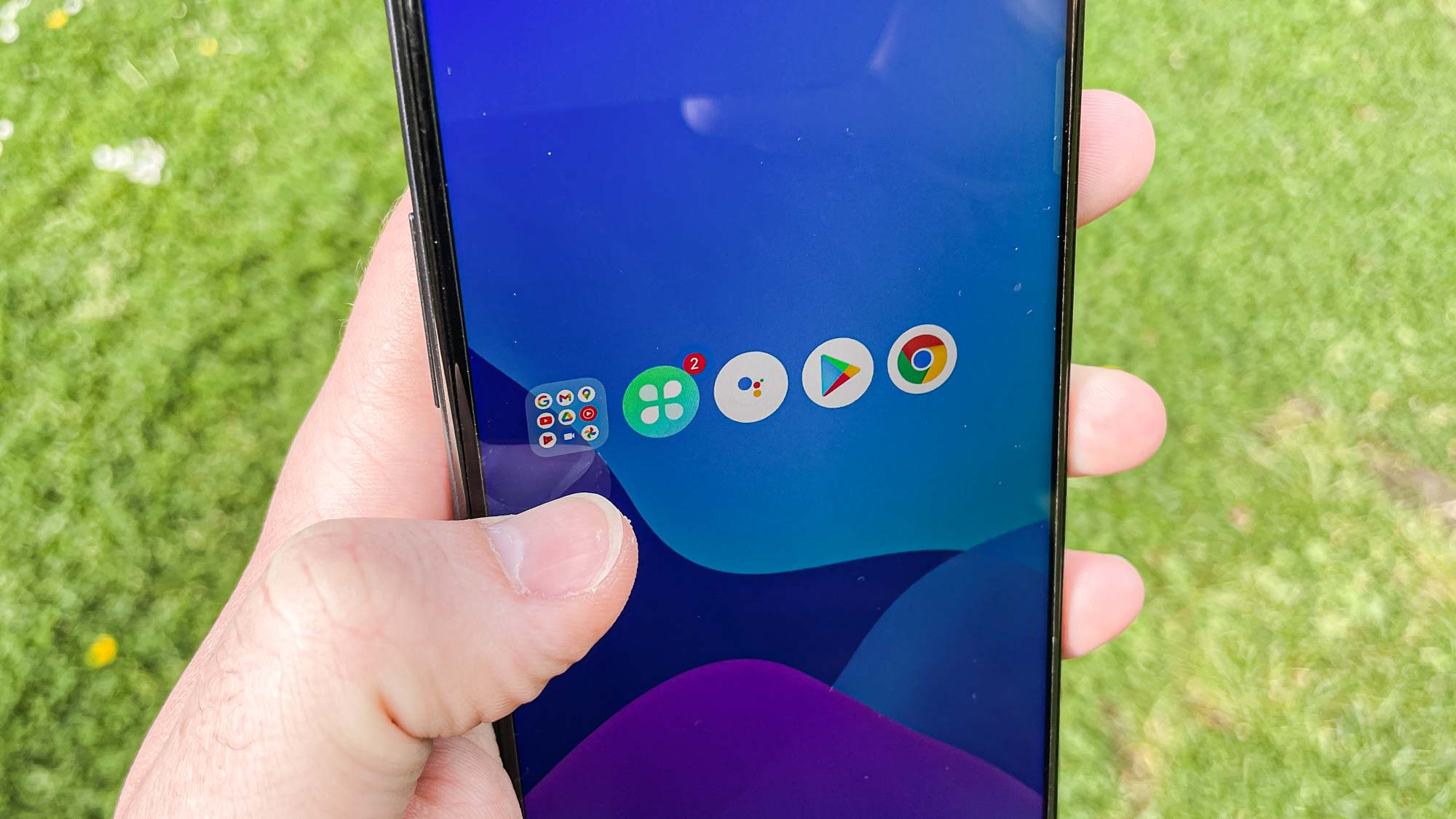
Realme 8 vs Realme 8 5G vs. Realme 8 Pro
Confusingly, Realme’s three-model range is already partly released, with the 8 Pro already on offer. And the weirdness doesn’t stop there.
As you can see in the table below, Realme’s phones don’t become cumulatively better as you move up the range. For example, the basic Realme 8 has faster charging than the Realme 8 5G, and a larger 64MP main camera, but costs the same. The Realme 8 5G is the only phone that offers a 90Hz refresh rate and a slightly larger 6.5-inch display as well as the 5G connectivity that it’s named after. The 8 Pro offers a 108MP main camera and a 50W charger, but also uses a smaller battery than the other two models.
I don’t think I’ve come across a more messy range of phones. Realme doesn’t sell all three phones in all the territories it’s active in, which may explain there’s this unusual arrangement of specs. However, you should compare all available models where you live if you’re interested, to make sure you get the best specs on whichever feature you prioritize.
| Row 0 - Cell 0 | Realme 8 | Realme 8 5G | Realme 8 Pro |
| Starting Price | £199 | £199 | TBC |
| Display | 6.4 inch FHD AMOLED (1080 x 2400) | 6.5 inch FHD AMOLED (1080 x 2400) | 6.4 inch FHD AMOLED (1080 x 2400) |
| Refresh rate | 60Hz | 60Hz/90Hz | 60Hz |
| Rear cameras | 64MP main, 8MP ultrawide, 2MP macro, 2MP depth | 48MP main, 2MP macro, 2MP depth | 108MP main, 8MP ultrawide, 2MP macro, 2MP depth |
| Front cameras | 16MP | 16MP | 16MP |
| Chipset | Mediatek Helio G95 | Mediatek Dimensity 700 | Qualcomm Snapdragon 720G |
| RAM | 4GB/6GB/8GB | 4GB/6GB/8GB | 6GB/8GB |
| Storage | 128GB | 128GB | 128GB |
| Battery | 5,000 mAh | 5,000 mAh | 4,500 mAh |
| Charging | 30W | 18W | 50W |
Realme 8 5G review: Verdict
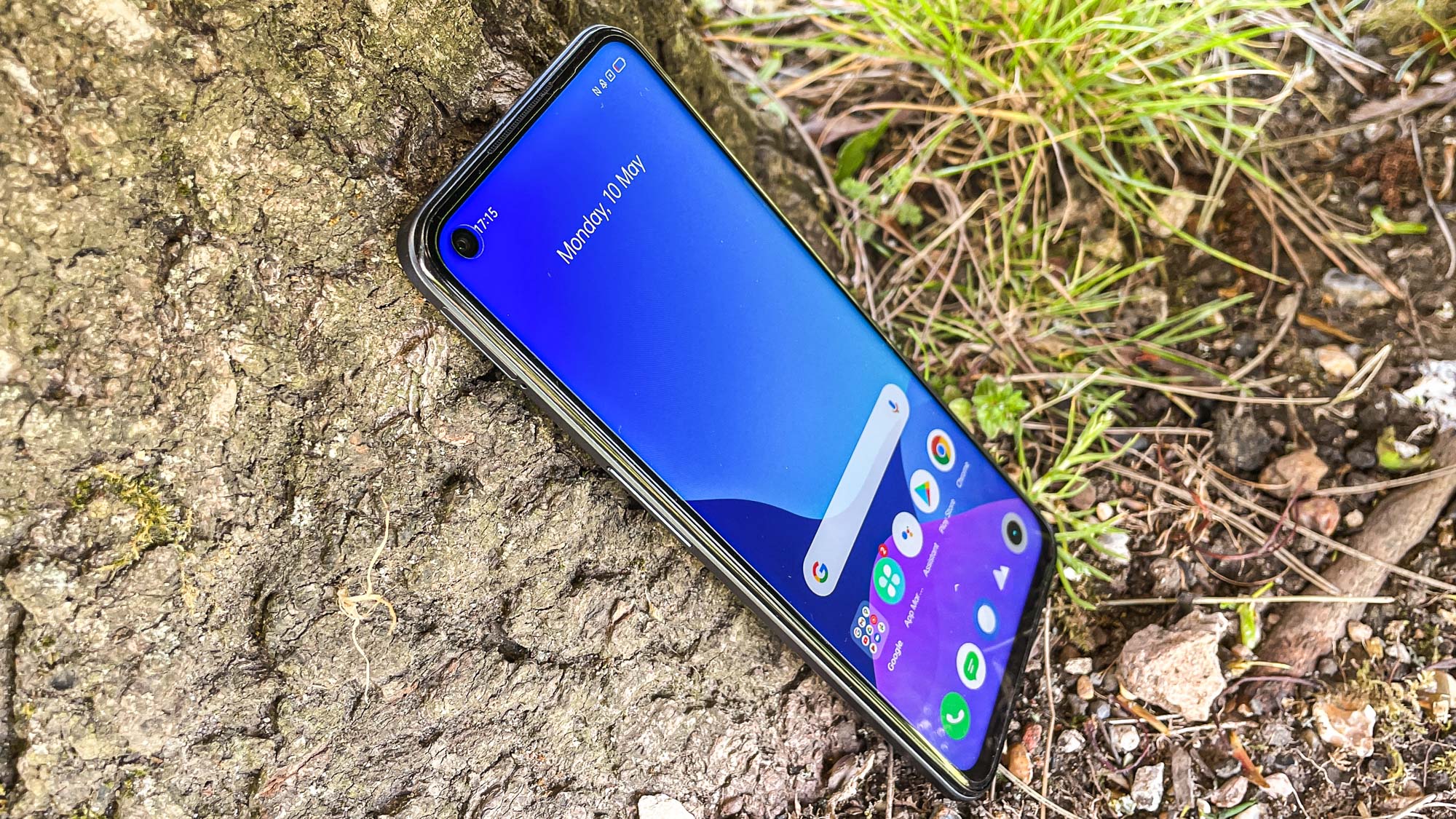
It’s hard to find 5G compatibility on budget phones, so the Realme 8 5G just existing is already a benefit. It’s also got a surprisingly nice display for such a cheap phone with its AMOLED panel and 90Hz refresh rate, so you can put that 5G to good use enjoying a video or online gaming while away from Wi-Fi.
Unfortunately, if 5G isn’t a key selling point for you right now, the Redmi Note 10 Pro is better than the RealMe Pro 8 in almost every regard. It’s larger, has better cameras, a more inviting user interface and faster charging, plus its display can manage 120Hz like many leading flagship phones.
U.S. users can’t buy either, and are better off looking for the Pixel 4a or a Moto G Power if their priority is a low price. Overall, U.K. customers who can buy the Realme 8 5G have limited reasons to pick it up over the Redmi, or other great cheap phones like the Pixel 4a.

Richard is based in London, covering news, reviews and how-tos for phones, tablets, gaming, and whatever else people need advice on. Following on from his MA in Magazine Journalism at the University of Sheffield, he's also written for WIRED U.K., The Register and Creative Bloq. When not at work, he's likely thinking about how to brew the perfect cup of specialty coffee.
